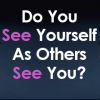My research focus areas are:
- Digital self marketing (DSM), impression management, online identity
- Personal branding
- Celebrity and social media
- Digital & social media
- Branding
- Social media for journalists
Examples of my research:
Digital Self-marketing Strategies of Australian-based Academics (2021)
Academics engage in self-marketing and use social networking sites (SNS) to market themselves. Academics are increasingly expected to utilise SNS platforms to build their profiles and increase the visibility of their work, although, many academics remain sceptical about the value of using SNS. This study investigates how academics are using digital self-marketing (DSM) to create digital identities and promote professional achievements.
The findings indicate that academics acknowledge the benefits of DSM, such as building relationships with other academics and developing research collaborations, and that it was important to participants that they remained credible and authentic. DSM concerns include needing to be polished, a common view being that credibility was undermined when used exclusively for self-promotion. DSM was considered time-consuming and not accounted for in university work planning. These findings detail benefits and challenges of DSM in the academic career context and are a valuable addition to the field of self-marketing.
Keywords: Digital self-marketing, academia, personal branding
See here for a link to my thesis in the RMIT thesis repository.
Understanding the self-marketing strategies of female academics (2020)
Perceptions, defined as tendencies to believe something about another person such as they are responsible or careless, supportive or quarrelsome, open-minded or closed are formed, in response to what people see and hear in others (Kenny, 1994). In interpersonal perceptions, perceiver effects are tendencies of perceivers to see others in a certain way (Srivastava, Guglielmo, & Beer, 2010). Judgements are dependent on verbal and non-verbal behaviours such as body language, hairstyle, body size and facial features. We make impressions of people around us very quickly, in fact, just a tenth of a second is sufficient for a person to make a specific trait inference from nothing more than facial appearance (Willis & Todorov, 2016). Impressions of people are also made in the digital sphere and an online presence can impact on how a person is perceived by others (McKenna, 2017).
Managing favourable images have been linked to higher career advancement (Wayne & Kacmar, 1991; Leary & Kowalski, 1990) and impression management can be an effective tool for career advancement (Wayne & Kacmar, 1991; Leary & Kowalski, 1990). However, there is not yet a link between impression management and academic careers. Women now outnumber men in the ranks of university students, yet men outnumber women in leadership roles in nearly all areas of professional workplaces.
In Australian Universities, women’s representation declines significantly from Levels A to E (Associate Lecturer to Professor) (Winchester, Lorenzo, Browning, & Chesterman, 2006). For women in academia, the barriers presented by the glass ceiling and sticky floors (Iverson, 2011) are real, and years of equal opportunity policies and procedures have failed to break down this barrier.
This research will investigate how female academics can effectively market themselves to promote and advance their careers. The study draws upon literature such as gender inequality, gender stereotyping, impression management and self-marketing. There is a gap in the literature linking self-marketing and its impact or influence on career success for female academics. This study will focus on the challenges female academics face as they progress through faculty and departments, and how employing self-marketing techniques may improve impact and career advancement.
Keywords: Self-marketing, academia, impression management, gender stereotyping, communication, digital branding
Gender stereotyping and bullying in Australia: Experiences and strategies of female managers (2017)
There are many factors that contribute to the complexity of barriers that women face in their career advancement. Some female professionals face gender stereotyping and bullying in the workplace. Stereotypes influence the unequal sharing between women and men of working time, income and family responsibilities. They also constitute barriers to women’s career advancement and appointment to decision-‐making positions.
The focus of this study is on two of these factors: gender stereotyping and bullying. Gender stereotypes are the beliefs and attitudes that are presumed to distinguish between women and men (Rollero, Glick & Tartaglia, 2014), while bullying can be referred to as the repeated acts of an individual or group with the intention to harm an individual holding an inferior position of power (Goldsmid & Howie 2014). While these two separate issues can occur independent of one another and in combination, gender based stereotyping and bullying both form critical barriers to female professionals.
This study explores the experiences of gender stereotyping and bullying of thirteen senior managers in Australia (eight women and five men). It fills a gap in the literature by connecting women’s experiences to strategies to overcome the barriers and move ahead.
The strategies women in this study used to attempt to address gender stereotyping and bullying were education, networking, mentoring and behaviours such as adopting masculine leadership and communication styles and using impression management tactics such as physical presentation and dress.
Keywords: Gender stereotypes, bullying, impression management, communication, gender



